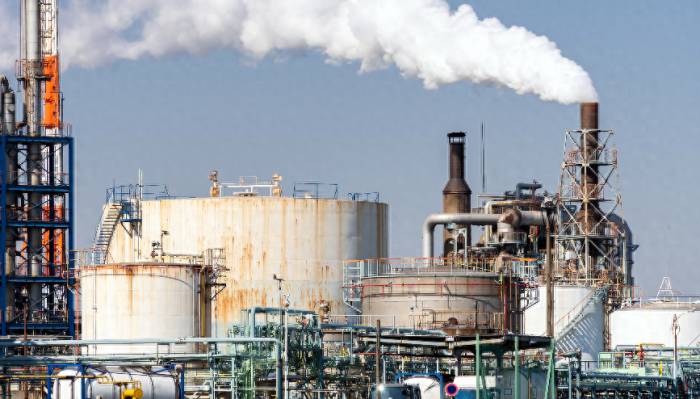Supply and Demand Tussle Behind Oil Price Surge
Oil prices have surged dramatically, with WTI crude oil futures prices breaking through $73.7 per barrel on Friday, reaching a four-week high and nearing their highest weekly increase since March 2023, with a cumulative increase of the week potentially reaching 8%. Brent crude oil futures prices have also broken through $77 per barrel.
The oil market is once again experiencing turbulence, with the game between supply and demand intensifying:
The geopolitical situation in the Middle East has escalated, and the oil infrastructure of major oil-producing countries, especially Iran, the third-largest oil producer after Saudi Arabia and Iraq, could become targets of attacks. Production halts and disruptions will affect the supply side.
More crucially, the market is concerned about the security of the Strait of Hormuz. The Strait of Hormuz connects the important Middle Eastern oil-producing areas of the Persian Gulf and the Gulf of Oman, and it is also the only waterway from the Arabian Sea into the Persian Gulf. The north shore is Iran, and the south shore is Oman. It is an important channel for Gulf oil-producing countries to export crude oil, handling oil flows that may account for more than twenty percent of global oil consumption. Therefore, if the Strait of Hormuz is interrupted, it will have a significant impact on global oil supply.
Advertisement
On the other hand, the Organization of the Petroleum Exporting Countries (OPEC) still has a large amount of idle production capacity. However, due to the production agreement among various oil-producing countries falling into a "prisoner's dilemma," it is likely that they will not increase production in response to the shortage of supply. After all, these oil-producing countries would prefer to see oil prices rise into the triple digits—if other oil-producing countries in the Americas and Africa do not take this opportunity to compete for market share.
Amid the escalating situation in the Middle East, Libya may resume some of its oil production facilities in the near future. In addition, non-OPEC oil-producing countries such as Brazil and Guyana may also be competing for market share, which may somewhat alleviate the supply gap. However, the temporary interruption in supply is still causing oil prices to soar, especially as the weather turns colder and the demand for heating oil may increase.
OPEC+, both externally and internally, will also fall into a "prisoner's dilemma." If they all produce according to the set targets, they believe that their interests are maximized. However, their "teammates" may not keep their promises and may secretly increase production or reduce production due to some internal factors. Coupled with the variable of Iran's supply, this will increase the divisions among OPEC member countries and intensify the uncertainty of the oil supply outlook.
On the demand side, the latest economic data from the United States, the world's largest energy consumer, is positive. The Institute for Supply Management (ISM) recently announced that the service industry's Purchasing Managers' Index (PMI) for September 2024 soared from 51.5 points last month to 54.9 points, significantly higher than the expected 51.7 points. A reading above 50 points reflects the expansion of the service industry, a positive economic outlook, and also implies an increase in demand.
At the same time, the number of people applying for unemployment benefits in the United States as of September 28 increased by 6,000 from the previous week, reaching 225,000, exceeding market expectations of 220,000, and reaching a three-month high, which may reflect a weakening job market. The four-week moving average of first-time unemployment benefit claims decreased by 750, to 224,250, reflecting a weakening trend.It should be noted that the Federal Reserve focuses on two key indicators when considering interest rates: inflation and employment. As inflation in the United States is currently under control, the Federal Reserve has recently shifted its emphasis to the job market, with achieving maximum employment as its goal. Therefore, this less-than-ideal employment data could very likely strengthen the rationale for significant interest rate cuts by the Federal Reserve, which may further promote increased demand in the United States.

Increased demand, coupled with temporary supply disruptions, may lead to a temporary widening of the supply-demand gap, which could increase oil price volatility.
In the Hong Kong stock market, major oil stocks are performing well. The "three barrels of oil," China National Petroleum Corporation (00857.HK), Sinopec (00386.HK), and CNOOC (00883.HK), are currently up by 3.21%, 2.52%, and 2.63%, respectively. However, they are still trading at discounts of 32%, 31%, and 36% compared to their A-shares.
post your comment